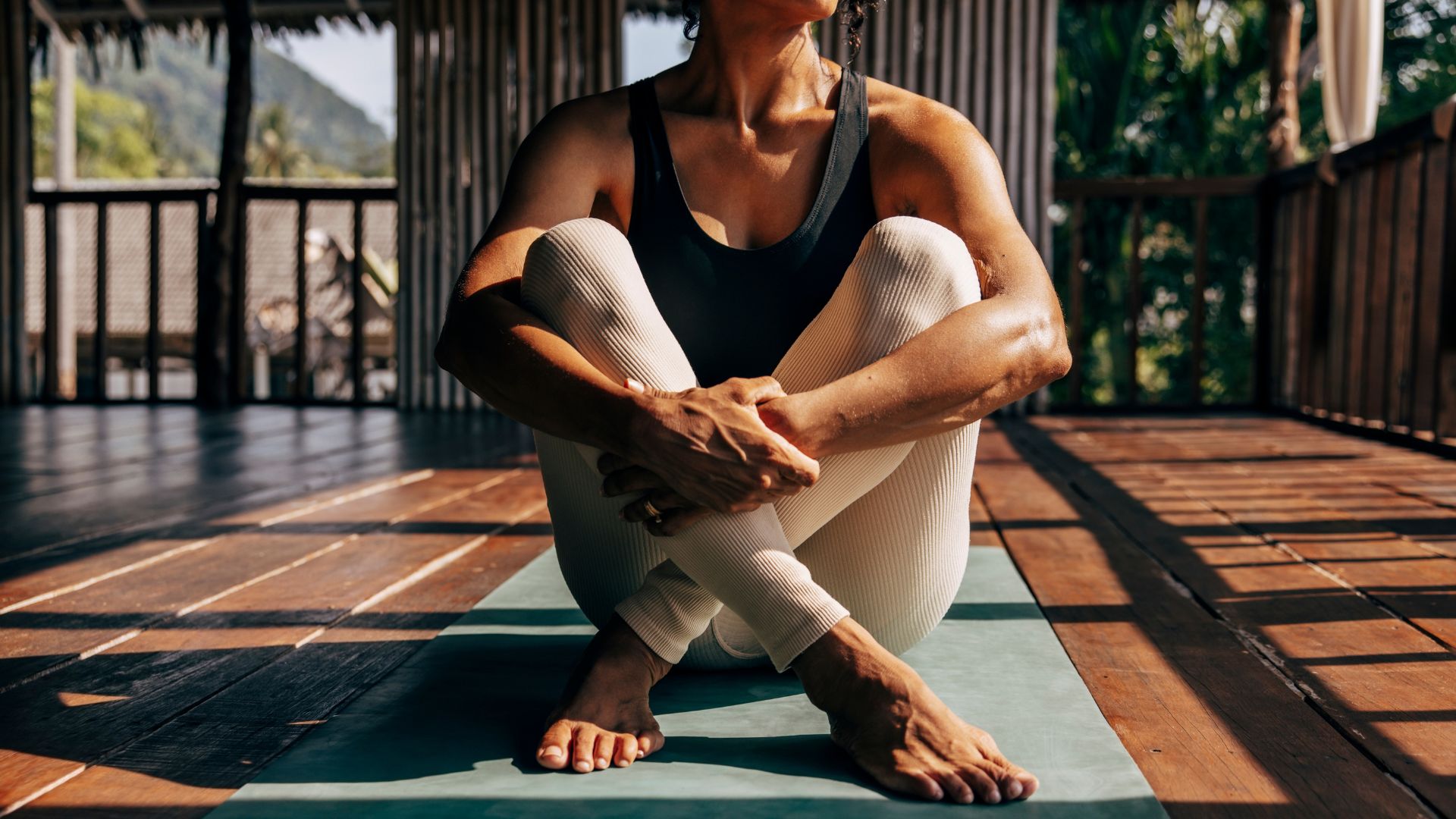This simple plank variation 'supercharged' my core strength and full-body stability - here's how to do it
I went from dreading the side plank exercise to doing it almost every day. It's great for building strength, stability, and balance in one movement


Fitness fads may come and go, but there’s one aspect of strength training we can all agree on: a strong core never goes out of style - and for this, I'd recommend the side plank exercise every time.
To some, it may look like an easy alternative to the classic plank, but those who've tried it will know that the side plank's simplicity belies its efficacy. Unlike many core exercises, this one engages and activates the entire body, not just the 'superficial' ab muscles. So, as you might expect, it's a little harder than the regular plank.
But trust me, it's worth the effort. After I added the side plank exercise into my regular training routine, I learnt just how effective it was, challenging my stability, balance and strength in one fell swoop.
What is a side plank?
As the name suggests, a side plank exercise is a variation of the classic plank. Instead of resting on your forearms or hands, you pivot onto one arm and one leg, using your core and glutes for support.
Thanks to this one-sided focus, it's a "highly effective full-body move", says Caroline Bragg, Master Pilates Trainer at Third Space London. "It targets the core, as well as stability in the hips and shoulders."
There are various levels of side plank to choose from, as well, notes Helen O'Leary, physiotherapist and Pilates instructor at Complete Pilates. So if your core strength isn't quite what you'd like it to be, you can work your way up.
"It’s important to make sure that you work at a level which is appropriate for you,” she says.
Sign up to our free daily email for the latest royal and entertainment news, interesting opinion, expert advice on styling and beauty trends, and no-nonsense guides to the health and wellness questions you want answered.
How to do a side plank
Form is everything when doing a side plank, says O'Leary. "It's important to make sure you are properly lined up, so I recommend doing it against a wall at first."
Above, Susie Martin, a fellow physiotherapist with Complete Pilates, reveals how to do the exercise.
- Line your shoulders, bottom and heels up against the wall.
- Prop yourself up on one forearm. The elbow should be directly underneath your shoulder, and the forearm should be at a right angle to your body.
- Press your forearm into the ground as if trying to push the floor away, then lift the lower side of your ribcage away from the floor.
- Pull your toes towards your shins, press the bottom leg down into the floor to engage your lateral leg muscles.
- Lift your hips towards the ceiling.
Expert tip: "When lifting up, you want to make sure your lower back keeps a 'neutral' position, so make sure it doesn't arch," says O'Leary. "Focus on pressing the hips forward to keep them open, and make sure your upper body doesn't rotate forwards or backwards by lifting your top arm, reaching your fingertips towards the ceiling."
She adds: "Your body should be in a straight line from ankles to shoulders."
What muscles does the side plank work?
- Core muscles: When we talk about the core, we’re not just referring to your superficial abs. Your core includes most muscles (large and small) from the shoulders down to the upper legs, including the upper back. It's why the bird dog and leg raises are equally good core exercises.
- Shoulder stabilisers: The side plank is a great exercise for the rotator cuff and for stabilising the scapula. These muscles are important for strong shoulders.
- Glutes: We all know the glutes as our buttock muscles, but you may not know that they’re made up of three different muscles: the gluteus maximus, gluteus medius and gluteus minimus. To maintain a decent side plank (which happens to be a good glute exercise in itself), we need to engage these large muscles, which are crucial for posture, stability and overall strength.
- Quadratus lumborum: Also known as the QL muscle, the quadratus lumborum is our deepest core muscle. Located at the lower back, on either side of our spine, it works to stabilise the lumbar region.
Benefits of the side plank
1. It challenges core strength and stability
Any kind of plank helps boost core strength, and the side plank is no exception. All our experts agree that the move targets not only the abs and obliques, but those smaller (but all-important) stabilising muscles in our deep core, too.
“A side plank targets lots of stabilising muscles that we don’t train very often with other types of exercises,” agrees O’Leary. “It recruits the lateral muscles of the torso - comprising the oblique muscles at the front and the lats and the QL at the back, which are an important part of your core.”
2. The side plank boosts endurance
Holding any kind of plank for a length of time is pretty impressive, but it requires solid endurance (how long your muscles can withstand force before they fatigue). A side plank is a simple and effective test of endurance, and it also serves as a good benchmark of progress, too.
“The side plank is an isometric hold, meaning you maintain muscular engagement without movement,” explains Aleksandra Warburton, a Pilates instructor. “As such, it’s particularly effective for improving endurance and joint stability.”
3. Enhances posture
Any type of core strengthening exercise, whether that's the good morning exercise or the Superman exercise, is beneficial for our overall posture. “ A strong core is about so much more than just aesthetics - it’s the foundation of good movement,” notes Warburton. “The stronger and more engaged your core, the better your posture, balance, and coordination, all of which reduce the risk of injury and back pain.
“Isometric exercises like a side plank teach the body how to sustain effort over time, which benefits posture, improves spinal support and allows us greater control in everyday movement.”
4. It improves functional fitness
Functional fitness is all about making everyday movements feel easier and reducing our risk of injury, especially as we age.
The side plank exercise is a functional exercise as it makes "everyday movements, like bending, twisting, or standing for long periods, feel smoother and more controlled” says Warburton. This makes the movement one of the best exercises for longevity as well.
“It’s not just about powering through tough exercises. It’s about learning to move with strength and efficiency in everything you do.”
5. The side plank addresses muscle imbalances
Isometric exercises are useful for identifying and addressing the strength imbalances that we all naturally have in our bodies. You may notice that your plank feels much easier on one side than the other, telling you that you need to work the weaker side more.
“The other brilliant benefit of the side plank is that you work on one side of the body at a time, so it is easy to pick up any asymmetry in strength,” says O’Leary. “You can’t do that with a regular plank!”
How long should you hold the side plank for?
As with any other exercise, how long you can (and should) hold a side plank will vary from person to person, depending on your individual fitness and strength. However, as a general rule, O’Leary recommends beginners start with five reps of five second holds, building up to 10 second holds and 10 repetitions.
More advanced exercisers can aim for 3 reps of 30 second holds, rising to a minute as you gain strength and endurance.
Side plank variations to try
- Kneeling side plank: Exactly what it says on the tin: a side plank, but rather than extending your legs so you’re maintaining a hold on your hands and feet, your knees will remain on the floor to support more of your weight.
- Side plank with a twist: Mobility and stability combine in this variation, often found in Pilates abs workouts. Once in position, place your free hand behind your head and slowly, with control, rotate your upper body until your elbow is closer to the ground. Try to rotate on an exhale for a deeper feel.
- Side plank with leg raise: Ready to up the ante? Bragg recommends trying your hand at a side plank with a leg raise - known as a ‘star raise’ in Pilates. Simply raise your top leg and hold on to one leg and hand, for as long as possible without compromising your form.
Anna Bartter is a freelance health and fitness writer who writes across a range of publications, including woman&home, Marie Claire, Stylist, Psychologies and more. She's never happier than when trying out a new wellbeing trend, and when she's not writing, she's most likely to be found at a reformer Pilates class.
You must confirm your public display name before commenting
Please logout and then login again, you will then be prompted to enter your display name.
